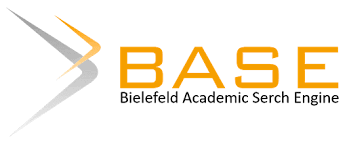Author Guidelines
To guarantee the quality of the journal, the Sewagati Journal will implement the Latest Template starting from the issue of Volume 2 Number 2 ( 2023, December).
Author Guidelines
- Contains scientific papers in the field of conceptual ideas, research results, theoretical studies and applications related to management science and information technology.
- Manuscripts are written in standard Indonesian according to enhanced spelling and or standard English.
- Writing from the results of research, theoretical studies and application of theory. The text must be original (has never been published) and written by researchers and the research team using Indonesian or English. Scientific texts that have been discussed in national and international scientific meetings, should be accompanied by footnotes.
- The body text after abstract, printed on A4 size paper, typed in a single space using the MS Word program, the times new roman font size 12, formatted in two columns with the width of each column 6.5 cm and the distance between column 1 cm.
- Procedures for writing research results should be arranged in the following order: Title, Author Identity, Abstract, Introduction, Research Methods, Results and Discussion, Conclusions and Suggestions, Acknowledgments, and Reference Lists. The entire script is not more than 15 pages long.
- Title: Short and clear (no more than 20 words), written in Capital letters only at the beginning of the word, except conjunctions: regular, bold type Time New Roman letter size 14.
- Author Identity: Full name (not abbreviated) without title. If the address of the author's agency is different, then behind each name is an index of Arabic numerals. The author's address is written under the author's name, including the laboratory, institution / agency, and e-mail address. An additional index is given to the author who can be invited to correspond (corresponding author).
- Abstract: Written in English. Abstracts include key words sorted according to their importance. Abstract contains a summary of the manuscript, covering all writing without trying to specify each part. Avoid using abbreviations, and do not include references.
- Introduction: Contains the scope, background of the objectives and benefits of the study. This section should describe the background so that readers can understand and assess the results of the study without reading previous reports relating to the topic. Take advantage of libraries that can support discussion.
- Research Methods: Describe in detail and clearly the nature of the research, data sources, data, procedures for data collection, materials used and the method of work carried out, including statistical methods. The method of work submitted should contain sufficient information so that it can be repeated successfully.
- Results and Discussion: Presented jointly and discussed clearly the results of the study. Can be presented in written form in a script, table, or image. Reduce the use of graphics if it can be explained in the text. Limit the use of photos, present photos that clearly illustrate the results obtained. Pictures and tables must be numbered and quoted in the text. The discussion presented should contain an interpretation of the results obtained and the discussion related to previous research reports. It would be better if the reference used came from the Journal. Avoid repeating statements that have been conveyed to methods, results and other information that have been presented in the introduction.
- Conclusions and Suggestions: Presented separately from the results and discussion.
- Acknowledgments: Can be presented if deemed necessary. Aimed at those who fund research and to reward institutions and individuals who have helped research or the process of scientific writing.
- Text references or quotes using the APA (American Psychological Association) style. Example: ...... quote (Champbell all., 2011). Champbell et.all. (2011) said that ......
- Reference List: Compiled alphabetically by name and year of publication. Magazine / journal abbreviations are based on the procedures used by each journal, journal / scientific magazine reference lists (last 10 years) of at least 60% and 40% text books. Example of writing a reference list:
Journal / Magazine: name, year, article title, journal name, vol. number, page, year.
Example: Yoger, R.E., Tamir, Pinchas, (1993). STS Aproach: Reasons, Intention, Accomplisment, and Outcomes. Journal Science Education Vol. 77(6), 11-17
Book: author's name, year of publication, title, edition, name and place of the publisher.
Example: Holman, J. (1986). Science-Technology In Society, General Guide, The Associationfor Science Education.
Seminar paper: name, year, paper title, seminar theme, date, place.
Example: Arinasa, I.B.K. (1998). Kontribusi Kebun Raya Eka Karya Bali dalam Melestarikan Flora Langka yang ada di Bali Beserta Permasalahannya. Makalah Seminar Hari Puspa dan Satwa Nasional, Tanggal 5 Nopember 1998 di STKIP Singaraja.
Proceedings: author's name, year, title, name of proceedings, date, page
Example: Muzzarelli R. (1990). Chitin and chitoson: Unique cationic polysaccharides, In: Procceding Symposium Toward Carbohydrate Based Chemistry. Amies,France,23-26 Oct 1989. Pp 199-231
Thesis / dissertation: name of author, year, title, name of university.
Example: Said S. (2003). Studies on fertilization of rat oocytes by intracytoplasmic sperm injection. (Unpublished Doctorate Disertation). Okayama: Okayama University.
Internet: Author name, year, article title, source, date downloaded.
Example: Okezone, (2008). Dampak Buruk Emisi Kendaraan. Diperoleh dari URL: http;//antos.okezone.com/index/Read story/2008/01/25/87/78078/dampak;buruk;e-. Diunduh tanggal 15 Pebruari 2008.
Submission Preparation Checklist
- Manuscripts are submitted via the Make a Submissions link on the right sidebar on this website by register as a user first (if not already registered). If already registered, please log in to start manuscript submission.
- We do not accept manuscripts sent via email, for those who are beginners in operating the applicationOpen Journal System (OJS) please see the page Learning OJS 3.
- If you have submission queries, please contact ftimahadewa@gmail.com and the author is expected to include a short Curriculum Vitae and a clear address.
Privacy Statement
The names and email addresses entered in this journal site will be used exclusively for the stated purposes of this journal and will not be made available for any other purpose or to any other party.



















